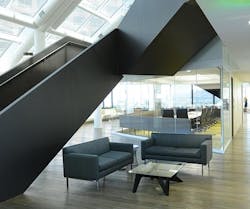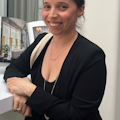When it was announced in July that S. Richard (Rick) Fedrizzi, CEO and founding chairman of the U.S. Green Building Council (USGBC), would soon be at the helm of the International WELL Building Institute (IWBI) instead, many wondered why.
The answer was a surprisingly simple one: It was time to let the bird leave the nest. “About a year and a half ago I realized we were in a place that I had always dreamed about,” he explained. Armed with an exceptional staff and the global ascendancy of LEED into 165 countries, Fedrizzi now had no doubt that USGBC would go on to leave an indelible mark on this world well after he was gone. Furthermore, he didn’t want to miss the opportunity for such a seamless leadership transition into the more-than-capable hands of Chief Operating Officer Mahesh Ramanujam, who will officially take Fedrizzi’s spot as CEO on Nov. 4.
And with that he left the job he told his wife about 14-and-a-half years ago would only be a temporary three-month gig that had him commuting from Syracuse, N.Y., to Washington D.C.
“I made the decision quickly, and expected nothing more than to join maybe two or three corporate boards in the space of sustainability; possibly resurrect my Green Think consulting firm, or do some speaking on behalf of my book,” Fedrizzi said. But when the industry got wind of his departure, some (friendly) ghosts came knocking: those from the IWBI that he’d assisted in bringing their WELL standard to market and whom he’d connected with Green Business Certification Inc. (GBCI)—the organization that administers LEED certification and provides third-party certification for the WELL Building standard.
“They asked if I would consider coming in to work for them for a period of three to four years. I jostled that around in my head for a while. I had a month off to think about it after having foot surgery. Laying there with my foot elevated above my heart for almost four weeks made me so desperately interested in not going anywhere near a couch ever again that I started to take their offer a lot more seriously.”
WELL puts a hyper focus on the performance of a building’s features that impact human health and wellness, but according to Fedrizzi there is actually a 25-30 credit crossover between LEED and WELL. “WELL respects biodiversity and species and climate issues and so forth while at the same time worrying about people’s blood pressure, oxygen levels, their performance in the proper lighting, air quality, nutrition, and more. It brings the entire system full circle.”
So once he realized that he could continue to make a difference by applying his 25 years of knowledge in green building to that arena, the decision was yet another quick one.
But not everything has always been so simple…
In 1993, when Fedrizzi and fellow USGBC co-founder David Gottfried decided to start a not-for-profit related to constructing greener buildings, laying the groundwork was brutal. “The first seven years were really gruesome,” he said. “We worked constantly, begging people to join. We understood that we needed a conference and a rating system but didn’t know what that meant and how we would get it done. But when LEED came to the market in 2000 it was as if you could see the patient come to life.” Membership started to rise, and he remembers receiving calls from the GSA as well as a New York City developer.
From then on, Fedrizzi made it his personal mission to make sure USGBC and LEED (and now IWBI and WELL) serve as great unifiers, not dividers. “It was Paul Hawken who told me years ago that one thing the environmental movement will do is circle the wagons and then shoot inward. That stuck with me. Why is it that whenever we are trying to do something with good intentions, there are those that need to try to divide it and conquer it, pick winners and losers? So I made it a point to work closely with the people developing the [WELL] standard. If we become the people desperately trying to win the space for the rating system of the day then we’re both going to lose.”
He continued, “Why don’t we use a different model here? Let’s show the world you can’t have a healthy building that isn’t LEED certified, and you can’t have the full picture of health and wellness unless you have the ability to rate the 75 credits that are not addressed in LEED relative to human health and wellness. Let’s go out into the marketplace united. If the current model is we need to divide and own and build walls then I want to knock down every wall. I want to unite what we can. I want to join forces. I’ve been out there for the past 15 years proving it, continually celebrating the Living Building Challenge, BREEAM from the UK, and the Green Star rating system from Australia.”
Fedrizzi believes there is no time for anything else. “Our Earth is burning. When you see how many people are suffering with cancers, and watch the Zika virus moving north—these are all things caused by climate change and the ignorance of human beings to act when they’ve got good, solid information to act upon.”
Next month, he will bring the best of what he’s done for 25 years of his life to the IWBI when he officially becomes the CEO, helping it not just thrive but, more importantly, respect and advance the mission of the partner organizations that only want to leave this world a better place.
“It’s been a journey,” he said—but one that is certainly not finished.
About the Author
AnnMarie Martin
Editor-in-Chief
AnnMarie is the former Editor in Chief of i+s and has been covering the commercial design space. Her style and vision has helped the brand evolve into a thought leader in purpose-driven design and cultural movements shaping the way we live and work.

